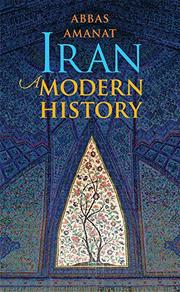

IRAN
A Modern History
by Abbas Amanat
A stately, scholarly study of Iran’s modern development, emphasizing themes of Iranian distinctness from Arab and Western cultures and traditions.
Given that the country was overrun constantly and threatened by powerful neighboring forces, from the Arabs to the Russians to the British, how did the Persian Empire resist being subsumed by them, retaining instead its remarkable language, culture, and Shia religion? In his elucidating study that moves from the establishment of the Safavid dynasty in 1501 through 2009, Amanat (History and International Studies/Yale Univ.) considers many different factors in the making of Iranian cohesion. Geography played an important part, as the country is protected by mountain ranges and at the crossroads of major trading routes yet is also vulnerable as a northern passageway for nomadic invasions. Known by the ancient Greeks as the “formidable Other” superpower, the Persian Empire enjoyed a rich linguistic and cultural tradition and developed a strong idea of political authority in the form of the shah (“one who deserves to rule on his own merit”). Moreover, the divide between the center of power and the periphery was great, and as Shi’ism was consolidated under the Safavid state in the 16th century, the tension gave rise to important indigenous messianic movements. The Qajar era (1797-1852) was marked by the struggle to resist colonial domination while gingerly adopting Western modern technologies. Amanat closely studies the liberal, anti-tyranny legacy of the Constitutional Revolution of 1905-1911 as both a driver of modernizing forces of the later Pahlavi reign (1925-1941) and a significant spur to the sense of democracy and national identity that would resonate with the Iranian Revolution. While the Shia religion (and its semiautonomous clergy) served as the bonding agent, the Ayatollah Khomeini was able to put “into practice the long-speculated-on idea of political Islam.” The author emphasizes the role of Iranian art—poetry, architecture, painting, music, cinema—in helping to encapsulate that national identity but also harbor expressions of political dissent against repressive authorities.
A bit textbook-ish, but unquestionably comprehensive and accessible enough for dedicated general readers.